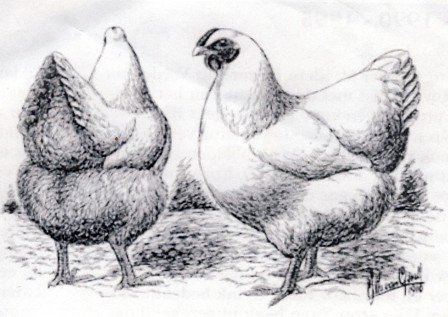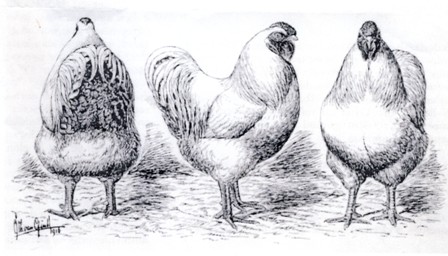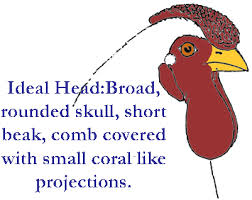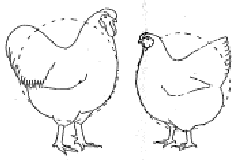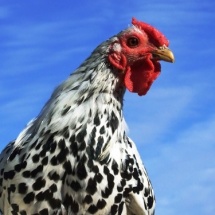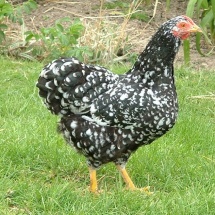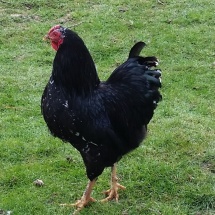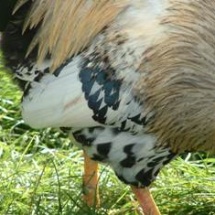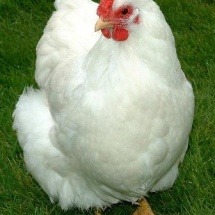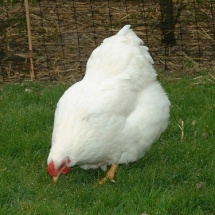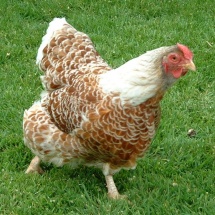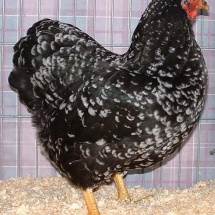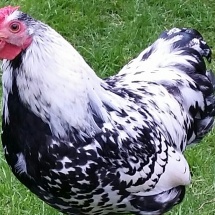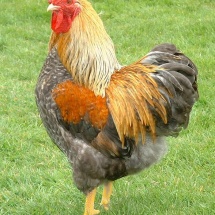Wyandottes are one of the most popular pure breeds of poultry in the UK but rare compared to hybrid layers and some varieties are very hard to get hold of.
Wyandottes are a “dual purpose breed”, that is to say they were originally bred to provide both meat and lots of lovely eggs; in the past they were a breed, especially a white strain, used for commercial egg laying. Typical of this type of bird they are categorised as a soft feathered heavy breed. They are known as “sitters” which means, unlike Mediterranean breeds, they will go broody and hatch their own eggs. They make excellent mothers.
The Wyandotte is a medium size curvaceous bird. They are well feathered and their body should fit in a circle. Other breed characteristics are a rose comb and yellow legs. They lay well, both the bantam and large version are good layers – renown for laying well in winter. Wyandotte bantams usually lay surprisingly large eggs and the yolk is proportionally larger than eggs of large fowl or those bought in shops and their eggs are usually tinted.
Wyandottes are one of the most glamorous exhibition breeds but they are also an ideal ‘first chicken’. Chickens can come in many shapes and sizes. Wyandottes come in both large about 7-8lb (unusually large cockerels can be up to 15lb) and bantam, which it technically called a “miniature” (about third the size of the large).
The smaller size of bantams means that they need less space, do little damage to the garden and easier to handle – just right for children and beginners (or anyone else who just wants easy chickens) – but are still very productive; mine lay eggs up to 60g.
Easy to keep
Wyandottes are friendly and easy to care for they are happy to free-range, but aren’t too adventurous, don’t really fly and are easy-going enough to be kept enclosed in the safety of coop and run which makes them ideal garden pets. Being clean-legged (feather-free legs and feet) they are stay looking good even in muddy conditions – which is very useful if keeping hens on less well-drained soils.
Huge range of colours
Wyandottes come in many different patterns, most of which come in numerous colours colours; the result gives a very wide choice. Some are very rare or not currently being bred but can be created/recreated from existing Wyandotte varieties or with the addition of other breeds; this is how poultry has always been bred and why the early varieties of Wyandottes varieties were so well known for their hybrid vigour.
A few of my favourite Wyandottes over the years

